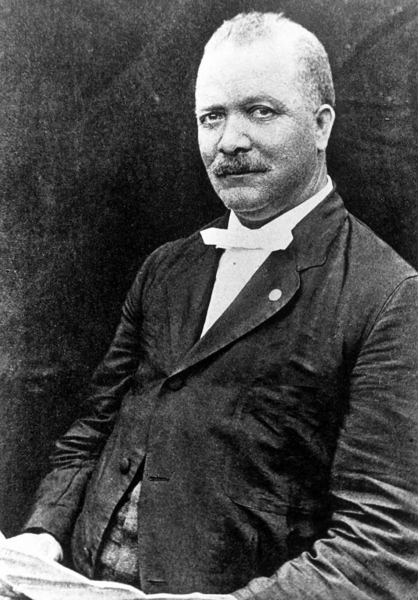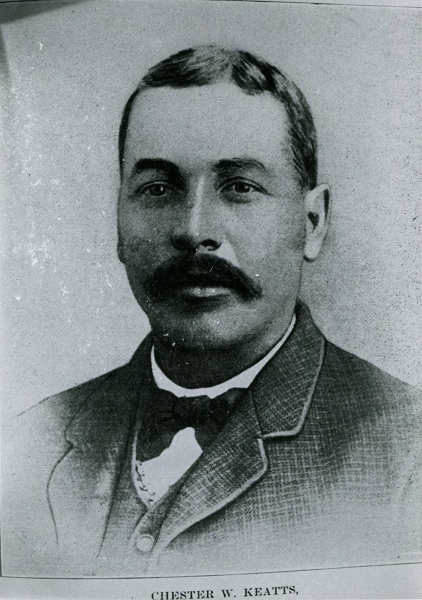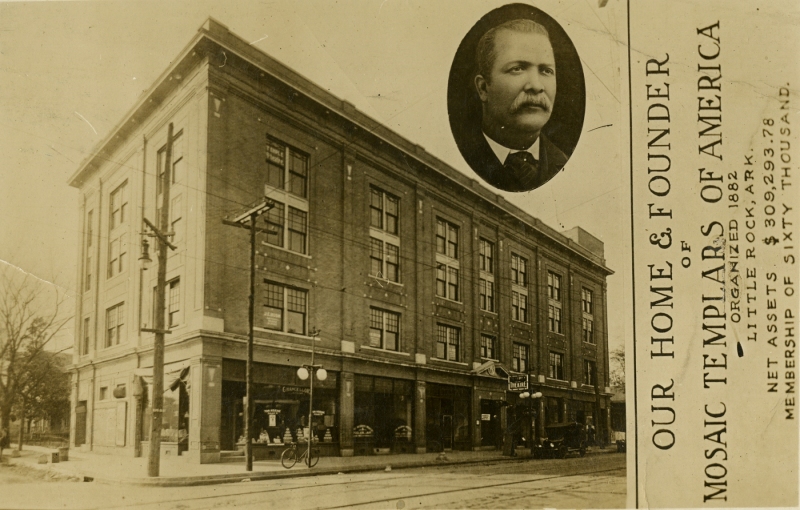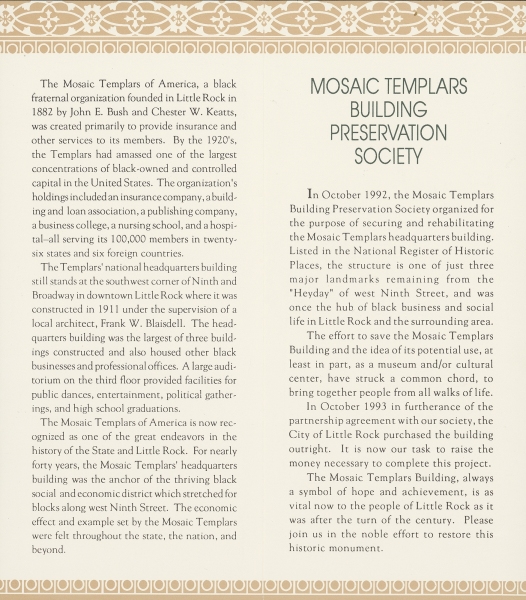During his terms as a state senator and U.S. congressman, Vic Snyder strove to promote Arkansas’s cultural heritage. One way he did this was by helping to preserve the Mosaic Templars of America headquarters and to repurpose the building into a Black and civil rights history museum.
MOSAIC TEMPLARS OF AMERICA
History
The Mosaic Templars of America (MTA) was a fraternal organization founded in 1882 by two formerly enslaved men, John E. Bush and Chester W. Keatts, with the purpose of providing burial insurance to the Black residents of Little Rock, Arkansas. Word soon spread of the work that was taking place in Little Rock, and the surrounding cities and states began to organize chapters of the MTA. This rapid spread required the MTA to have a central headquarters. The Templars chose the corner of West 9th and Broadway streets in the Black business district of Little Rock.
The MTA international headquarters opened in January 1913 with a dedication by Booker T. Washington, one of the pre-eminent leaders in the Black community. At the time he stated that the structure was the largest building built by Negros for Negros.
The building would see years of vibrancy until the Great Depression. Like many other organizations, MTA closed due to the worst financial crisis in the country’s history. After the Templars’ vacancy, the building was used as a rental space for other businesses and in the late twentieth century, the building was scheduled to be demolished.
BUILDING
Preservation
In response to the proposed demolition of the MTA building, local advocates founded the Mosaic Templars Building Preservation Society in 1992. Their mission was to secure and rehabilitate the MTA headquarters building. Many people, including state Senator Vic Snyder, saw great potential for the structure. After touring the structure and hearing Historian John Graves’s enthusiasm about the building and its illustrious history, Snyder realized “the rich history and great opportunity contained within those old walls.”1
Snyder began writing letters of endorsement to various individuals and organizations, promoting the importance of the MTA building and its significant history in the state of Arkansas. He contacted colleges, universities, members of the Arkansas General Assembly, and city and state officials to ask for their support in preserving and restoring the MTA building. In 1993, the Mosaic Templars Building Preservation Society and the City of Little Rock purchased the building for $100,000, making it the first building purchased by the city for historic preservation. In the same year, city voters passed a $185,000 bond initiative to purchase additional lots surrounding the building in order to preserve them for a future Black history museum.
CREATION OF THE
Museum
Even after Snyder was elected to the U.S. Congress, he continued to support the Mosaic Templars Building Preservation Society by writing letters of endorsements to city, state, and federal agencies on its behalf. The goals of the preservation society and Congressman Vic Snyder came to fruition when the Arkansas General Assembly passed Act 1176 of 2001, which established the museum and made it a division of the Department of Arkansas Heritage. Now, twenty years later, the Mosaic Templars Cultural Center (MTCC) is a nationally accredited, world-class, award-winning museum of Arkansas’s Black history and culture, made possible by the efforts of Vic Snyder and other dedicated Arkansans.

Want to learn more about the Mosaic Templars Cultural Center? Go to Arkansas Heritage MTCC to explore MTCC's collections, preview its current exhibits, and learn about upcoming events.
For More Information:
- Victor F. Snyder Congressional papers, UALR.MS.0180.
- Victor F. Snyder Congressional papers, UALR.MS.0180.
Arkansas State Legislature. “Act 1176 of 2001.” 83rd General Assembly., Reg. Sess. 2001. Accessed December 30, 2021. https://www.arkleg.state.ar.us/Acts/FTPDocument?path=%2FACTS%2F2001%2FPublic%2F&file=1176.pdf&ddBienniumSession=2001%2FR.
McVey, Julie. “Mosaic Templars Cultural Center.” Encyclopedia of Arkansas. Central Arkansas Library System. October 21, 2021. https://encyclopediaofarkansas.net/entries/mosaic-templars-cultural-center-6402/.
Victor F. Snyder Congressional Papers, UALR.MS.0180, UA Little Rock Center for Arkansas History and Culture, Little Rock, AR.
Wintory, Blake, and Ashan Hampton. “Mosaic Templars of America.” Encyclopedia of Arkansas. Central Arkansas Library System. December 16, 2019. https://encyclopediaofarkansas.net/entries/mosaic-templars-of-america-1186/.
About the Author:
Brian Rodgers is the Community Relations Liaison at the Mosaic Templars Cultural Center.




